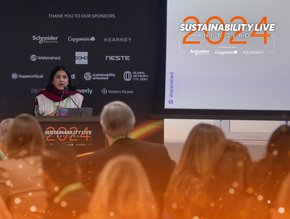Equinor reduces CO2 emissions from the supply chain by 600,000 tonnes

Equinor has 13 supply vessels in its contract portfolio that are ready for shore power supply, including Rem Eir from Remøy Shipping, whose contract with Equinor was recently extended by three years. (Photo: Vidar Hardeland / Equinor ASA)
Since 2011, Equinor has reduced CO2 emissions from its logistical operations for the Norwegian continental shelf (NCS) by 600,000 tonnes. The company’s ambition is to halve emissions in the NCS supply chain by 2030.
On Friday 18 January, NorSea will open a shore-to-ship power supply station at the Dusavik supply base by Stavanger. This base is the latest in a row of supply bases where vessels on Equinor contract are offered shore power while at berth and charging of their onboard batteries.
Shore-to-ship power supply is one of several measures to reduce emissions in logistics. Thirteen supply vessels on long-term contracts with Equinor have installed shore power systems on board, and a further five vessels in the contract portfolio will be prepared for shore power supply during 2019.
“We need broad cooperation if we are to reduce emissions from our supply chain. Equinor plays a key role in this effort, as we have many suppliers who must be team players if we are to cut emissions. We influence operations by our management of day-to-day activities, commercially by rewarding low emissions in contracts and strategically by supporting a business that utilizes vessels, vehicles and helicopters in a proper way,” says Phillipe F. Mathieu, head of Equinor’s joint operations support cluster.
Since 2011, Equinor has cut emissions from its logistical operations by a total of 600,000 tonnes of CO2, corresponding to annual emissions from all cars in Oslo. This includes helicopters and vessels used for supply, emergency response, rig moves and storage.
Total emissions have been reduced by 37%, while emissions adjusted for reduced activity have been reduced by 26%.
See more:
Azizi Developments awards $58.8mn construction contract to Chirag Contracting
Nationalisation of jobs in the UAE experiences 200% increase during 2018
Equinor has an ambition of stepping up its emission reduction in the NCS supply chain from 26% to 50% by 2030, based on 2011 level.
An increasing number of shipowners with supply vessels in the Equinor portfolio are prepared for hybrid battery operation and shore power supply.
A central financial contributor for shipowners aiming to adapt their vessels to hybrid battery operation and shore power supply, the NOX fund gives financial support based on how much the systems are being used up to a ceiling.
“We have an ambition of moving all vessels on long-term contract with us to shore power, because we have seen that it is an efficient tool for reducing emissions. We note that shipowners, crews, base companies and authorities are strongly committed and willing to prepare for operation and infrastructure that will help reduce emissions,” says Mathieu.
In addition to Dusavik, shore-to-ship power supply stations have been installed at the supply bases at Mongstad in Hordaland, Florø in Sogn og Fjordane, Kristiansund in Møre og Romsdal and Hammerfest in Finnmark during the past year.
The Norsea Group and its subsidiaries have been active in developing four of the bases used by Equinor for its supply activities. Financial support by Enova has made the investments possible.






